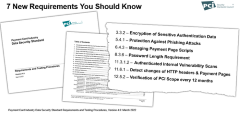


Charitable Organizations Save with Payway
This time of year, more and more people find it in their hearts and wallets to donate to various charities.
Last year was the sixth annual #GivingTuesday event—the first Tuesday after Thanksgiving designed to create an international day of charitable giving at the beginning of the Christmas and holiday season. In its sixth year, #GivingTuesday raised about $274 million online in the United States, with the total representing a 50 percent increase over 2016.
According to Philanthropy News Digest more than two million donations were processed during the day in 2017. Facebook, which partnered with the Bill & Melinda Gates Foundation, matched up to $2 million in donations made via the Facebook platform, and it reportedly processed $45 million in donations.
The United Way of Metropolitan Dallas reported last year that it raised more than $22 million for ninety-two organizations and JPMorgan Chase employees increased their giving some 23 percent, to $4.7 million.
All of this giving makes you feel warm and fuzzy about the amount of money going to deserving organizations, non-profits and charities. But, it is important to make sure that these donations are going to where they’re intended — the not-for-profit organization and not transaction fees.
For Payway, this is an important part of our business model, not just around the holidays, but every day!
The Payway pricing model is transparent, so if the charitable organization is using Payway to process donations, it knows exactly how much is going to the transaction and how much is going to the charity. There are no bundles with hidden fees, and that is important for non-profits because every penny matters.
So what should non-profits look for? Well, there are two common pricing models — bundled pricing and cost plus pricing.
With bundled pricing, transactions are assigned to a processing category, each of which has its own rate. The categories typically include debit cards, qualified or standard credit cards, mid-qualified cards, and non-qualified cards (reward cards and international cards). The pricing for each category maps to the interchange rate — the rate charged by the card association for each card type (MasterCard, Visa, American Express).
It makes sense for the pricing to fluctuate with the interchange rates, but here’s the problem…the bundled rate combines everything together, making it impossible for you to know how it breaks down. Merchants and nonprofit organizations collectively pay millions of dollars a year in overcharged interchange.
Cost-plus pricing is more transparent because you know how it breaks down. Each interchange fee is identified, as well as the processing mark-up, so you can see exactly how your cost is calculated. Payway operates a cost-plus pricing model so that you can be confident you’re not being overcharged and there aren’t any fees hiding in the math.
Recently, Payway helped one Boston-area nonprofit save 15 percent more of the donations they were receiving. The business model is clear and simple, keep more of what you raise, and let the money go where it is intended to go… the charitable organization. Now that is something everyone can feel warm and fuzzy about this time of year.


